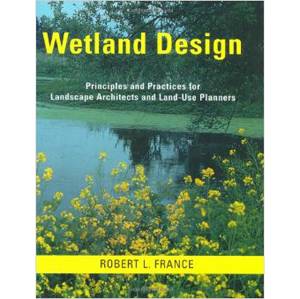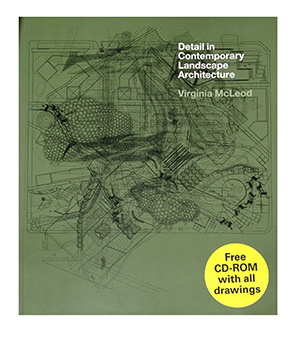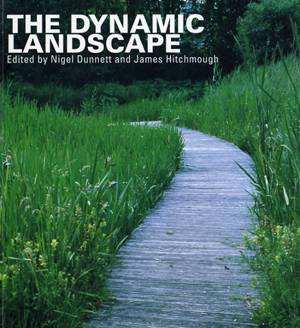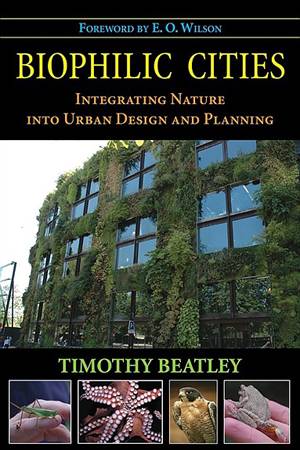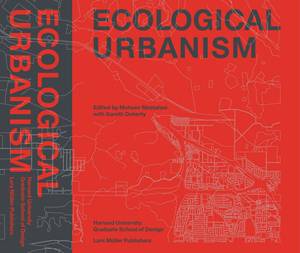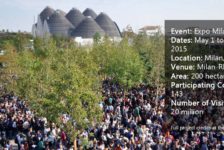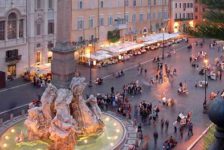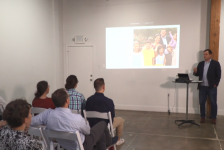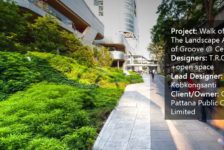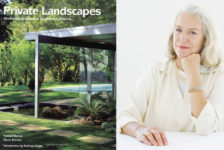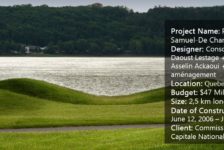Top graduate Joe Clancy shares his top book recommendations for your fourth year of landscape architecture. Continuing on from our first, second and third articles, here are 10 books that helped me through my fourth year of Landscape Architecture. Prices quoted are from Amazon. However, shop around, as they aren’t cheap. Of course, check your University’s library first. In case you missed any of our lists make sure to click on the links at the end of this article. 10. Wetland Design (Robert L. France)
Covering the creation, restoration, enhancement and construction of designed wetlands, this work provides a practical guide for wetland design on a local, site-specific scale, and reviews the impact of wetland design projects on the environment. More than 150 key principles and practices of wetland design and planning are presented, accompanied by detailed illustrations and case studies. Get it Here! 9. Dirt (Megan Born, Helene Furjan, Lily Jencks) Dirt presents a selection of works that share dirty attitudes: essays, interviews, excavations, and projects that view dirt not as filth but as a medium, a metaphor, a material, a process, a design tool, a narrative, a system. Rooted in the landscape architect’s perspective, Dirt views dirt not as repulsive but endlessly giving, fertile, adaptive, and able to accommodate difference while maintaining cohesion. This dirty perspective sheds light on social connections, working processes, imaginative ideas, physical substrates, and urban networks. Dirt is a matrix; as a book, it organizes contributions from architecture, landscape architecture, urban planning and design, historic preservation, fine arts, and art history. Get it Here! 8. Detail In Contemporary Landscape Architecture (Virginia McLeod) Detailing makes a landscape unique, and a landscape architect outstanding. Featuring many of the worlds most highly acclaimed landscape architects, this book presents 40 of the most recently completed and influential landscape designs. Each project is presented with colour photographs, site plans and sections as well as numerous construction details. There is also a brief descriptive text, detailed captions and in-depth information for each project. The projects are presented in clear and concise layouts over four pages. All commissioned especially for this book, the drawings are styled in a consistent manner and presented at standard architectural scales for easy comparison. Read our full review of Detail In Contemporary Landscape Architecture. Get it Here! 7. Biomimicry in Architecture (Michael Pawlyn) In the search for genuinely sustainable building design and technology – designs that go beyond conventional sustainability to be truly restorative – we often find that nature got there first. Over 3.5 billion years of natural history have evolved innumerable examples of forms, systems, and processes that we can now apply beneficially to modern green design. Aimed at architects, urban designers and product designers, Biomimicry in Architecture looks to the natural world to seek clues as to how we can achieve radical increases in resource efficiency. Get it Here! 6. The Dynamic Landscape (Nigel Dunnett, James Hitchmough) The last quarter of the twentieth century witnessed a burgeoning interest in ecological or naturally inspired use of vegetation in the designed landscape. More recently, a strong aesthetic element has been added to what was formerly a movement aimed at creating nature-like landscapes. “The Dynamic Landscape” advances a fusion of scientific and ecological planning design philosophy that can address the need for more sustainable designed landscapes. It is a major statement on the design, implementation and management of ecologically inspired landscape vegetation. Get it Here! 5. The Landscape Urbanism Reader (Edited by Charles Waldheim) With populations decentralizing and cities sprawling ever-outward, twenty-first century urban planners are challenged by the need to organize not just people but space itself. Hence a new architectural discipline has emerged: landscape urbanism. In “The Landscape Urbanism Reader”, Charles Waldheim – long at the forefront of this new movement – has assembled the definitive collection of essays by many of the field’s top practitioners. Fourteen essays written by leading figures across a range of disciplines and from around the world – including James Corner, Linda Pollak, Alan Berger, Pierre Belanger, Julia Czerniak, and more – capture the origins, the contemporary milieu, and the aspirations of this relatively new field. Get it Here! 4. CPULs: Continuous Productive Urban Landscapes (Joe Howe, Andre Viljoen) This book on urban design extends and develops the widely accepted ‘compact city’ solution. It provides a design proposal for a new kind of sustainable urban landscape: Urban Agriculture. By growing food within an urban rather than exclusively rural environment, urban agriculture would reduce the need for industrialized production, packaging and transportation of foodstuffs to the city dwelling consumers. The revolutionary and innovative concepts put forth in this book have potential to shape the future of our cities quality of life within them. Urban design is shown in practice through international case studies and the arguments presented are supported by quantified economic, environmental and social justifications. Get it Here! 3. Shaping Neighbourhoods (Richard Guise, Hugh Barton, Marcus Grant) This substantially revised and important second edition responds to a changing agenda in government policy and planning practice, putting issues of climate change and obesity at the centre of its concern. This guide ensures you: understand the underlying principles for planning healthy and sustainable neighbourhoods and towns plan the collaborative and inclusive processes needed for multi-sectoral cooperation develop know-how and skills in matching local need with urban form discover new ways to integrate development with natural systems design places with character and recognise good urban form guide communities, and advise developers, in the creation of successful and sustainable places for living. Containing many new case studies and a wealth of new research, this indispensable guide bridges the gulf between theory and practice, between planning authorities, investors and communities, and between different professional perspectives. Get it Here! 2. Biophilic Cities (Timothy Beatley) A biophilic city is more than simply a biodiverse city, says Beatley. It is a place that learns from nature and emulates natural systems, incorporates natural forms and images into its buildings and cityscapes, and designs and plans in conjunction with nature. A biophilic city cherishes the natural features that already exist but also works to restore and repair what has been lost or degraded. In Biophilic Cities Beatley not only outlines the essential elements of a biophilic city, but provides examples and stories about cities that have successfully integrated biophilic elements – from the building to the regional level – around the world. From urban ecological networks and connected systems of urban green space, to green rooftops and green walls and sidewalk gardens, Beatley reviews the emerging practice of biophilic urban design and planning, and tells many compelling stories of individuals and groups working hard to transform cities from grey and lifeless to green and biodiverse. Get it Here! 1. Ecological Urbanism (Edited by Harvard University) While climate change, sustainable architecture, and green technologies have become increasingly topical, issues surrounding the sustainability of the city are much less developed. The premise of the book is that an ecological approach is urgently needed both as a remedial device for the contemporary city and an organizing principle for new cities. Ecological urbanism approaches the city without any one set of instruments and with a worldview that is fluid in scale and disciplinary approach. Design provides the synthetic key to connect ecology with an urbanism that is not in contradiction with its environment. Get it Here! We hope you enjoyed our lists and that they were of benefit to you, if you happened to miss out on any of Joe’s recommendations, please see the links below for the first, second and third years of landscape architecture. Related articles: 10 Books to Read in Your First Year of Landscape Architecture 10 Books to Read in Your Second Year of Landscape Architecture 10 Books to Read in Your Third Year of Landscape Architecture Article written by Joe Clancy RETURN TO HOMEPAGE Featured image: © Copyright Stephen Craven and licensed for reuse under this Creative Commons Licence. Published in BlogLogin
Lost Password
Register
If this is your first time on the new site, please click "Forgot your password?". Follow the steps to reset your password. It may be the same as your old one.



